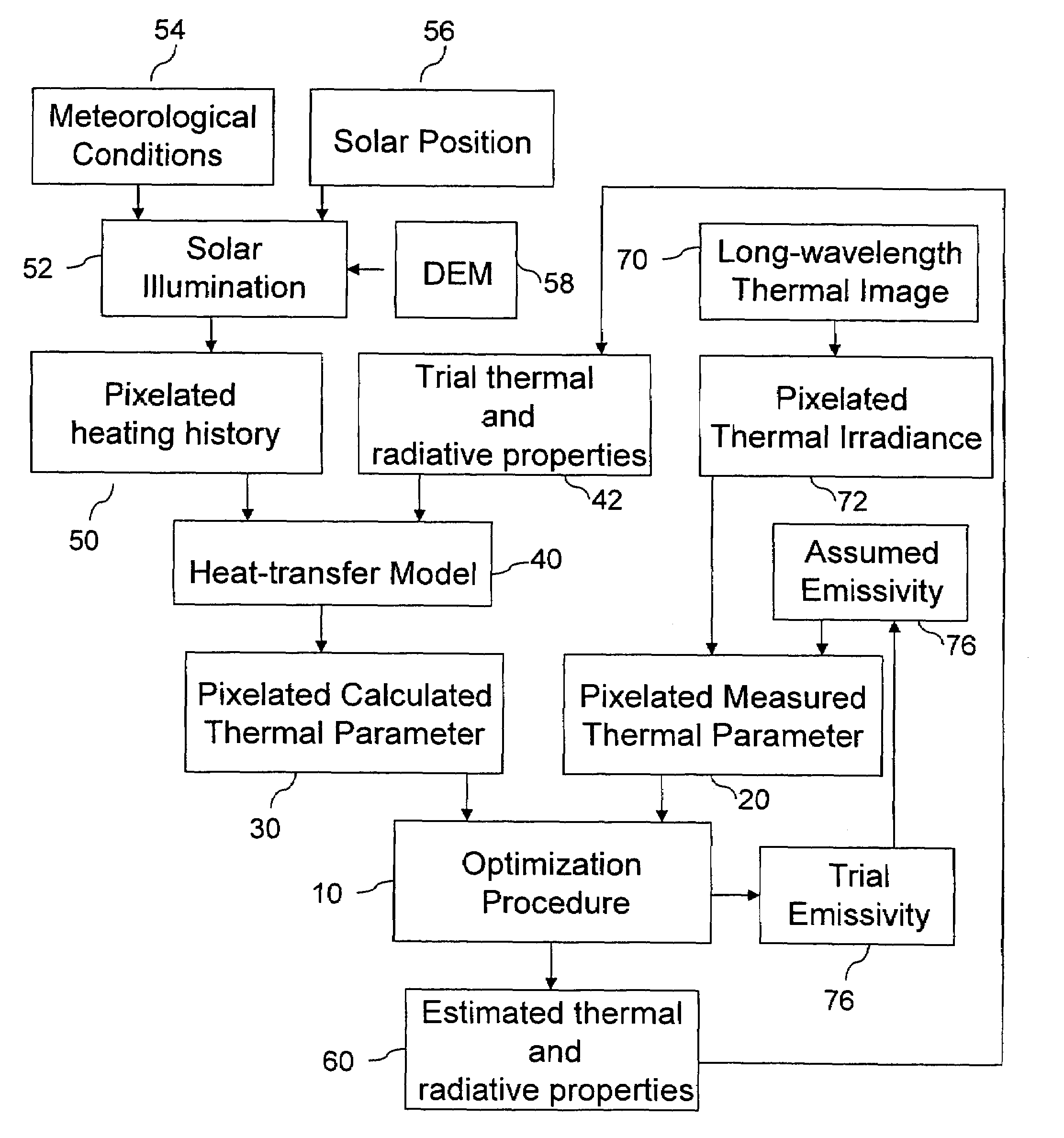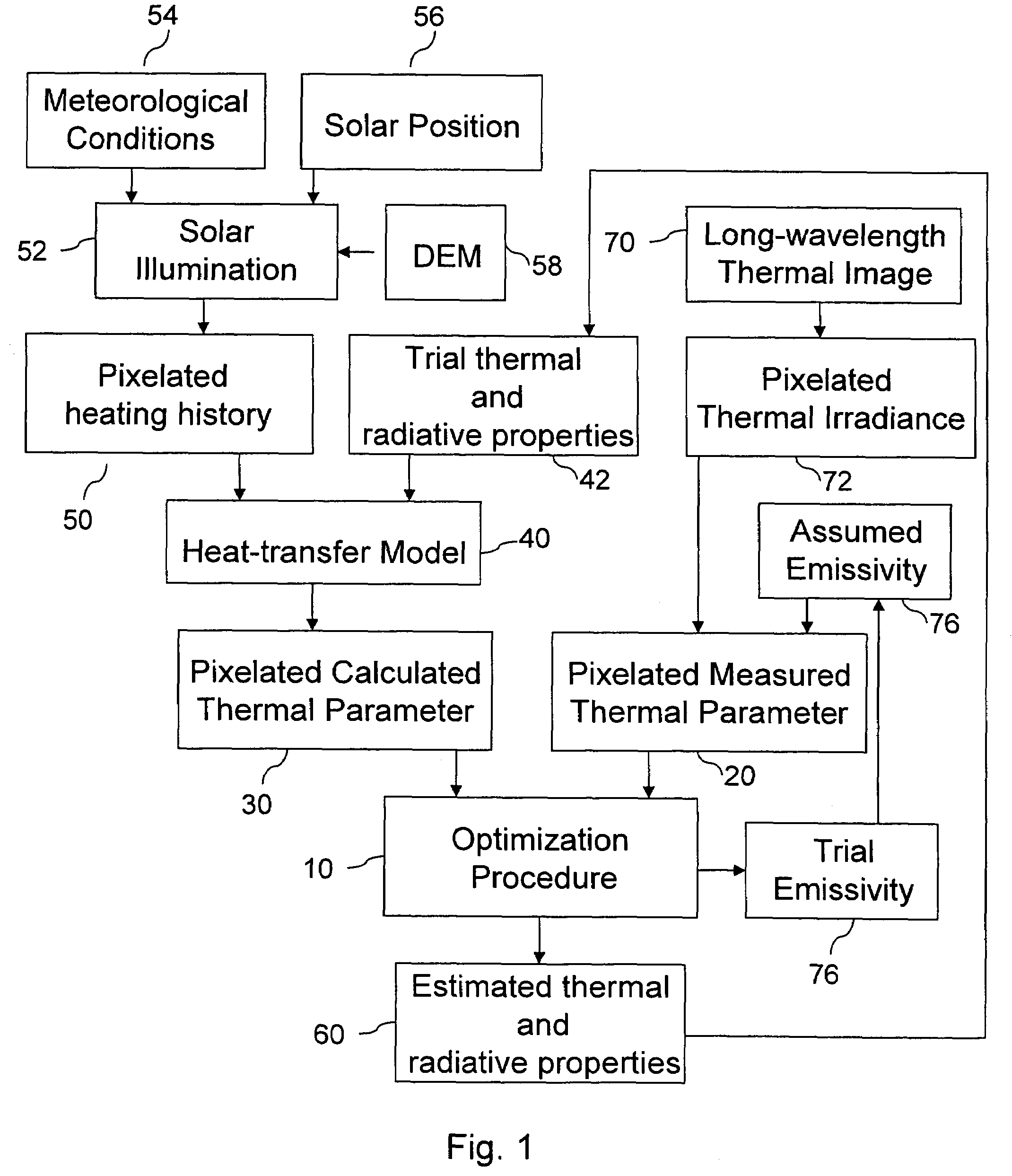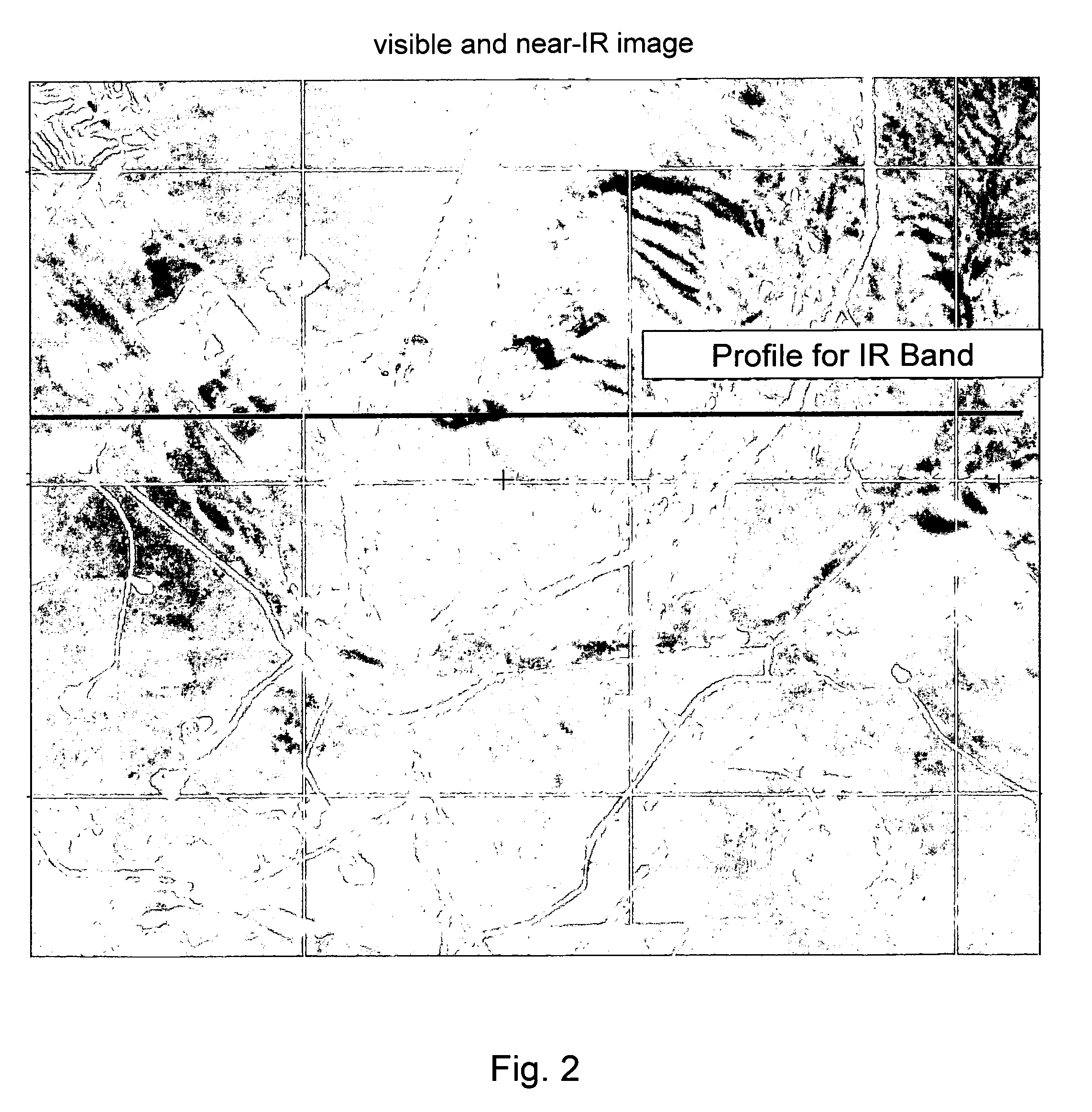Method for measuring thermal properties using a long-wavelength infrared thermal image
a technology of thermal image and infrared thermal image, which is applied in the direction of heat measurement, instruments, calorimeters, etc., can solve the problems of failure to include the heating and cooling history of the region of the earth's surface being measured, and the failure to properly register such day image and night image pairs,
- Summary
- Abstract
- Description
- Claims
- Application Information
AI Technical Summary
Problems solved by technology
Method used
Image
Examples
Embodiment Construction
[0011]This invention comprises a method for estimating the thermal properties of earth surface materials using long-wavelength thermal imagery by exploiting the differential heating histories of ground points in the vicinity of shadows. The use of differential heating histories of different ground points of the same surface material allows the use of a single image acquisition step to provide the necessary variation in measured parameters for calculation of the thermal properties of surface materials. In some embodiments, calculations using a one-dimensional heat transfer model with time-varying boundary conditions predict surface material temperatures with significant differences (5–15° C.) as functions of local pixel sunrise and sunset times and thermal surface material parameters. The pixel-by-pixel sunrise and sunset times within a pixelated thermal image depend on the date of collection and the site's location and topography, which can be obtained from a digital elevation model...
PUM
 Login to View More
Login to View More Abstract
Description
Claims
Application Information
 Login to View More
Login to View More - R&D
- Intellectual Property
- Life Sciences
- Materials
- Tech Scout
- Unparalleled Data Quality
- Higher Quality Content
- 60% Fewer Hallucinations
Browse by: Latest US Patents, China's latest patents, Technical Efficacy Thesaurus, Application Domain, Technology Topic, Popular Technical Reports.
© 2025 PatSnap. All rights reserved.Legal|Privacy policy|Modern Slavery Act Transparency Statement|Sitemap|About US| Contact US: help@patsnap.com



